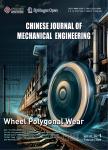Integrated Virtual Assembly Process Planning System
Integrated Virtual Assembly Process Planning System作者机构:School of Mechanical Engineering Beijing Institute of Technology Beijing 100081 China
出 版 物:《Chinese Journal of Mechanical Engineering》 (中国机械工程学报(英文版))
年 卷 期:2009年第22卷第5期
页 面:717-728页
核心收录:
学科分类:0817[工学-化学工程与技术] 080202[工学-机械电子工程] 08[工学] 0807[工学-动力工程及工程热物理] 0802[工学-机械工程] 0811[工学-控制科学与工程] 0801[工学-力学(可授工学、理学学位)]
基 金:supported by National Natural Science Foundation of China (Grant No. 50805009) The Eleventh Five Year Plan Defense Pre-Research Fund, China (Grant No. 51318010205)
主 题:virtual assembly assembly model assembly task collision detection automatic constraint recognition cable harness assembly process planning
摘 要:Assembly process planning(APP) for complicated products is a time-consuming and difficult work with conventional method. Virtual assembly process planning(VAPP) provides engineers a new and efficiency way. Previous studies in VAPP are almost isolated and dispersive, and have not established a whole understanding and discussed key realization techniques of VAPP from a systemic and integrated view. The integrated virtual assembly process planning(IVAPP) system is a new virtual reality based engineering application, which offers engineers an efficient, intuitive, immersive and integrated method for assembly process planning in a virtual environment. Based on analysis the information integration requirement of VAPP, the architecture of IVAPP is proposed. Through the integrated structure, IVAPP system can realize information integration and workflow controlling. In order to mode/the assembly process in IVAPP, a hierarchical assembly task list(HATL) is presented, in which different assembly tasks for assembling different components are organized into a hierarchical list. A process-oriented automatic geometrical constraint recognition algorithm(AGCR) is proposed, so that geometrical constraints between components can be automatically recognized during the process of interactive assembling. At the same time, a progressive hierarchical reasoning(PHR) model is discussed. AGCR and PHR will greatly reduce the interactive workload. A discrete control node model(DCNM) for cable harness assembly planning in IVAPP is detailed. DCNM converts a cable harness into continuous flexed line segments connected by a series of section center points, and designs can realize cable harness planning through controlling those control nodes. Mechanical assemblies (such as transmission case and engine of automobile) are used to illustrate the feasibility of the proposed method and algorithms. The application of IVAPP system reveals advantages over the traditional assembly process planning method in



